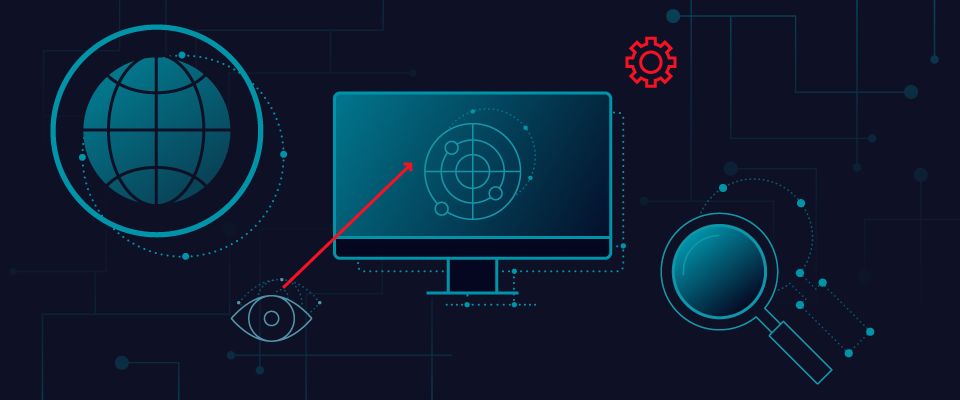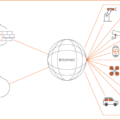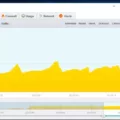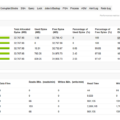When it comes to security, threat modeling is an essential process for protecting your data and applications. It helps you identify potential risks, quantify the threat and vulnerability criticality, and provide proactive solutions to mitigate those risks. The most popular threat modeling framework today is called the MITRE ATT&CK framework.
The MITRE ATT&CK framework provides a methodology for security risk management based on common threat actor tactics, techniques, and procedures (TTPs). By using this framework, organizations are able to identify assets that require protection from malicious actors, analyze their vulnerabilities, then create safeguards to protect against identified risks.
The MITRE ATT&CK framework consists of five major steps:
1. Defining security requirements: This step involves determining which assets need protection and what types of threats they may face. This can include a variety of topics such as insider threats, external threats, data privacy laws, regulations, etc.
2. Creating an application diagram: Once the security requirements have been identified, an application diagram should be created to provide a visual representation of how different components interact with each other within the system. This helps to better understand what types of threats may target specific components or flow paths within the system.
3. Identifying threats: Through analyzing the application diagram and security requirements, potential threats can be identified based on known TTPs used by malicious actors in various attack scenarios against similar systems or applications.
4. Mitigating threats: After identifying potential threats against your system or application, strategies for mitigating those risks should be implemented such as patching vulnerable areas or implementing additional security measures like two-factor authentication or encryption algorithms.
5. Validating that threats have been mitigated: Before deploying any changes to your system or application it is important to validate that any implemented countermeasures have actually mitigated the identified risk(s). This ensures that when deployed into production all changes actually work as expected thus providing maximum protection against potential attackers within your environment.
Overall, the MITRE ATT&CK framework provides organizations with a comprehensive approach to threat modeling that covers all aspects from identification through the implementation of strategies and validation of results in order to ensure maximum protection against malicious actors targeting their IT infrastructure or applications.

Understanding the Threat Modelling Framework
Threat modeling is a framework designed to help organizations better understand and analyze potential security threats. It is used to identify, assess, and prioritize potential security threats in order to mitigate risks. The framework consists of four key elements: identity, analysis, evaluate, and response.
The first element of the framework is identification, which involves mapping the assets that must be protected and the associated attack surfaces. This includes identifying all components of a system or application that can be targeted by an adversary. The second element is analysis, which involves analyzing threats by studying their root causes and understanding how they could be exploited. The third element is evaluation, which involves assessing the impact of each threat on an organization’s assets and operations. Finally, the fourth element is a response, which involves developing countermeasures for mitigating identified risks and vulnerabilities.
Overall, threat modeling helps organizations develop a more comprehensive security strategy by providing visibility into potential security risks in order to protect their assets and operations from malicious attacks. By taking proactive measures to identify potential threats before they become major issues, organizations can limit their exposure to risk while also reducing costs associated with recovering from an attack or breach.
Steps of Threat Modeling
Threat modeling is an important part of developing a secure application. It helps identify possible threats and vulnerabilities that could be exploited, as well as suggest ways to mitigate them. The five steps of threat modeling are:
1. Defining Security Requirements: This step involves defining the security requirements for the application, such as data protection, authentication, and authorization, privacy, etc. This sets the framework for your application and helps ensure that all security considerations are taken into account.
2. Creating an Application Diagram: This step involves creating a diagram of the application architecture to help visualize how the different components interact with each other and how data flow through the system. This allows you to identify potential attack vectors more easily.
3. Identifying Threats: Once you have an understanding of how your application works, it’s time to start thinking about potential threats that could be exploited by malicious actors or attackers. You should consider both external threats (such as remote attackers) as well as internal threats (such as disgruntled employees).
4. Mitigating Threats: Once you have identified potential threats, you can start looking at ways to mitigate them. This could involve implementing access control measures or encrypting sensitive data, for example.
5. Validating That Threats Have Been Mitigated: After implementing mitigation measures, it’s important to validate that they are working correctly and effectively mitigating the identified threats. You can do this through penetration testing or vulnerability scanning tools, for example.
Is Mitre ATT&CK a Threat Model?
Yes, MITRE ATT&CK is a threat modeling framework. It provides organizations with detailed information on the tactics, techniques, and procedures (TTPs) used by threat actors to target their systems, applications, and data. By understanding these TTPs, organizations can better prepare for potential attacks and reduce their security risk. The framework helps organizations identify their most critical assets and prioritize their security investments accordingly. Additionally, it helps organizations understand the specific threats they may face and how different security controls can help mitigate those risks.
Stages of Threat Analysis
1. Identify Assets: This step involves identifying and cataloging the assets or resources that are valuable to the organization or system being assessed. This could include hardware, software, data, personnel, intellectual property, and other assets. Identifying these assets is important in order to understand the potential risks they face and how they may be targeted by malicious actors.
2. Identify Threats: This step involves identifying the threats that may target an organization or system’s assets. These threats could range from natural disasters to cyber-attacks. It is important to understand the different types of threats that exist in order to properly assess risk and create appropriate countermeasures.
3. Analyze Vulnerabilities: This step involves analyzing the potential vulnerabilities of an organization or system’s assets and understanding how they may be exploited by malicious actors. It is important to identify where weaknesses exist so that appropriate safeguards can be put in place to protect against them.
4. Create Countermeasures/Safeguards: This step involves creating appropriate countermeasures or safeguards to protect against identified risks. These countermeasures may include implementing additional security measures, such as encryption or access control systems, as well as enhancing existing security protocols or procedures to better protect against potential threats.
Steps of Threat Modeling
1. Define business objectives: The first step of threat modeling is to define the business objectives that the system or application is trying to achieve. This helps to identify any potential threats and vulnerabilities that could impact the organization’s goals.
2. Define the technical scope of assets and components: It’s important to take an inventory of all the assets, components, and systems that make up the application or environment which will be threat modeled.
3. Application decomposition and identify application controls: The third step of threat modeling is to break down the application into its component parts and assess any existing security controls in place.
4. Threat analysis based on threat intelligence: During this step, it’s important to conduct a thorough analysis of potential threats based on external threat intelligence sources such as national security advisories or industry reports.
5. Vulnerability detection: Once potential threats have been identified, it’s important to look for any existing vulnerabilities in the system that could be exploited by an attacker.
6. Attack enumeration and modeling: As part of a comprehensive threat modeling process, it’s important to simulate different attack scenarios by estimating which ones could be successful under various conditions, as well as what types of resources would be needed for each attack vector.
Common Threat Modeling Techniques
The three most commonly used threat modeling techniques are STRIDE, DREAD, and Attack Trees. STRIDE is a mnemonic developed by Microsoft for threat modeling, which stands for Spoofing, Tampering, Repudiation, Information Disclosure, Denial of Service, and Elevation of Privilege. DREAD (Damage Potential, Reproducibility, Exploitability, Affected Users, and Discoverability) is a rating system to evaluate threats based on their potential damage. Finally, Attack Trees is a technique that uses a tree diagram to model the various ways an attack can occur. By identifying possible attack scenarios before they happen, organizations can mitigate risk and reduce their overall security exposure.
What is the Meaning of MITRE ATT&CK?
MITRE Att&ck stands for MITRE Adversarial Tactics, Techniques, and Common Knowledge. It is a globally-accessible knowledge base of adversary tactics and techniques based on real-world observations. The Att&ck framework provides a comprehensive approach to understanding the threat landscape by mapping out the tactics and techniques used by adversaries in their attacks. It also provides organizations with actionable guidance to improve their detection, prevention, and response capabilities. Additionally, the Att&ck framework can be used to inform security investments, understand the full attack lifecycle, and aid in measuring security effectiveness.
Conclusion
In conclusion, a threat modeling framework is an essential part of any security risk management plan. It provides a structured process to identify, analyze and mitigate potential threats and vulnerabilities in the environment. By using the MITRE ATT&CK framework, organizations can gain insight into common threat actor TTPs and create effective countermeasures or safeguards to protect their assets. Threat modeling frameworks are constantly evolving as new threats emerge, so it is important for organizations to stay up-to-date with the latest developments in order to ensure their security posture remains adequate.








